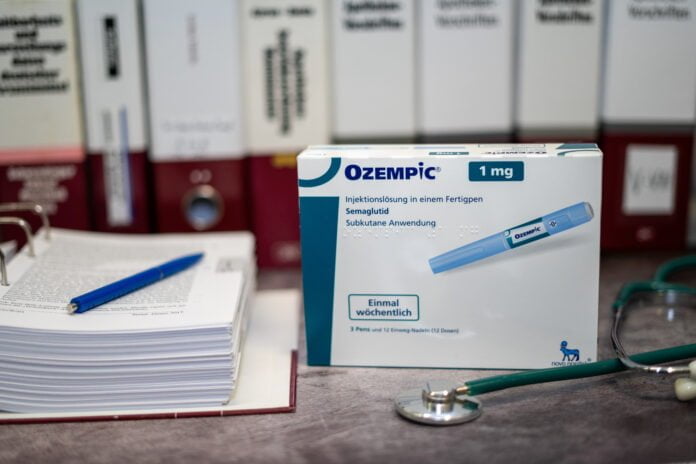
Most people have heard of or know someone who’s using the medication Ozempic to address their blood sugar issue, but also losing a great deal of weight.
The prescription medication being used to treat patients with Type 2 Diabetes, or a state of insulin-resistance that’s often reversable–with behavior modifications, such as diet and exercise–has gained popularity because of the weight loss that accompanies its use.
Taken by subcutaneous injection only, Ozempic, is in a class of drugs called glucagon-like peptide 1 (GLP-1) agonists. This class of medications, available only through a healthcare provider’s prescription, mimic a hormone which stimulates the production of your body’s insulin during and after a meal. This extra insulin produced lowers the blood sugar levels that are characteristic of Type 2 Diabetes.
The weight loss is likely attributed to the slowing of food emptying out of the stomach into the small intestine which produces a full feeling quicker and longer than without the medication.
Individuals under their doctor’s care receiving Ozempic or others from this class of drug lose, according to the prescribing information, 10.5-15.8 pounds. Those patients who incorporate lifestyle changes, such as changes in one’s daily food intake and activity levels, lost 33.7 pounds.
According to information from the Mayo Clinic, patients taking medications from the GLP-1 class of drugs have also benefitted from improvements in their blood pressure and cholesterol levels.
In science, and in this case, causation and correlation must be distinguished. Does the medication alone reduce the blood pressure and improve cholesterol or does the weight loss correlated with the use of the medication cause the improved numbers?
And that seems to be a valid point. If patients taking the medication alone lose almost 16 pounds, but shed about 18 pounds more with changes in how these patients ate daily and enhanced their activity, shouldn’t one assume those behavioral changes alone, without taking an injection, are achievable?
The answer is “Yes!”
Obviously, if you walk more, move around more, and burn more calories, you lose weight. You also increase your metabolism as you build your muscle mass, even slightly, and increase activity.
Further, there are foods that produce the same outcomes as Ozempic. Meals and snacks that feature good fats–like avocado or nuts–and revolve around high protein sources like eggs and fish, trigger GLP-1. Food choices that are high in fiber, such as whole grains, and especially fermentable fiber, like beans and legumes, which feed the good bacteria in your intestines, stimulate GLP-1 as well as digest more slowly than simple sugars and carbohydrates found in prepared foods, fast foods, and many snacks.
If you’re looking for a guide for this type of food selections, check out the terrific article at Health.com, which speaks beyond the Ozempic effect with improved cognitive performance and slowing the risk of chronic disease. For those whose doctors have prescribed Ozempic or any other medication, make a few changes and gain an even greater health benefit.
